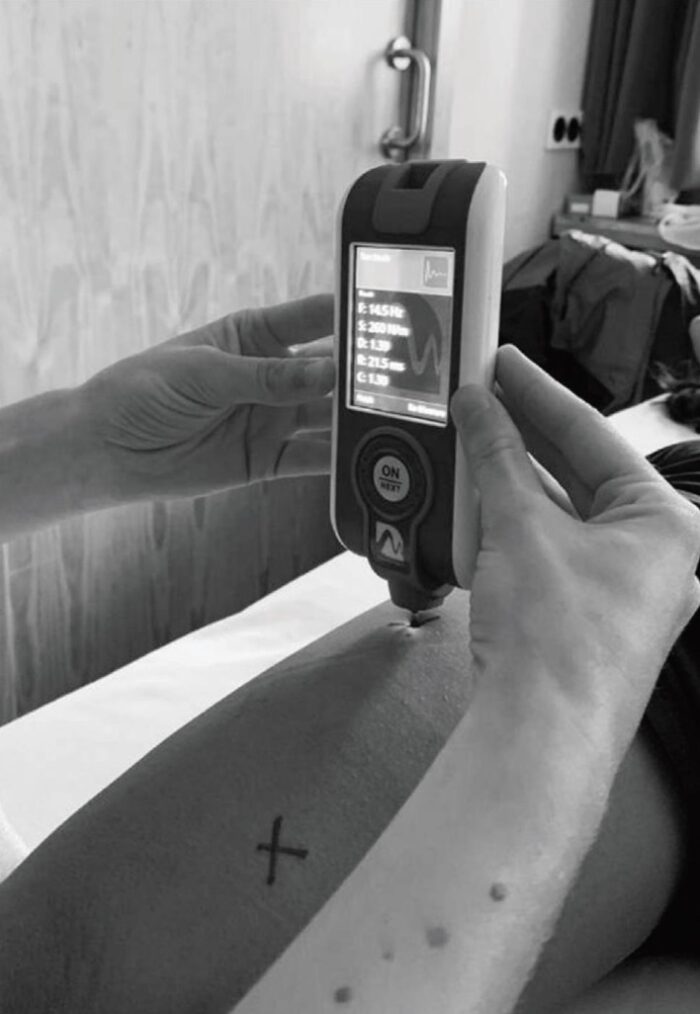Publications

Muscle Tone, Stiffness, and Elasticity in Elite Female Cyclists after Consecutive Short Competitions
Authors: Cristina Rotllan 1, Francisco Corbi 2, Gines Viscor 1
Affiliations:
- Seccio de Fisiologia, Departament de Biologia Cellular, Fisiologia i Immunologia, Facultat de Biologia, Universitat de Barcelona, Barcelona, Spain
- Institut Nacional d’Educacio Fisica de Catalunya, Universitat de Lleida, Lleida, Spain
Journal: Translational Sports Medicine - April 2024, Volume 2024, Aricle no. 2434494 (DOI: 10.1155/2024/2434494)
-
Field & Applications:
- Sport
- Muscle development / Performance
- Fatigue / Overtraining
- Injury prevention
- Musculoskeletal health
Background: For professional road cyclists, most overload injuries affect the lower limbs. They are mostly represented by contractures or muscle shortening, characterised by a variation of muscular tone, stiffness, and elasticity. This real-life study aimed to assess specific mechanical parameters in top-class female cyclists who participated in 3 races a week.
Hypothesis: Muscle tone, stiffness, and elasticity will be affected immediately after competition and at the end of the week due to accumulated fatigue.
Methods: Six professional cyclists were evaluated. This pilot study consisted of a controlled trial and three days of competition, with rest days between them. MyotonPRO was used to measure tone, stiffness, and elasticity in six leg muscles: vastus lateralis (VL), vastus medialis (VM), rectus femoris (RF), biceps femoris (BF), lateral gastrocnemius (LG), and medial gastrocnemius (MG). Daily basal and pre- and postrace measures were carried through to the 3 races in a week.
Results: The muscular tone of VL, VM, LG, and MG and the stiffness of VL, VM, RF, BF, LG, and MG decreased after races. VL and RF were mostly affected by (p = 0.05) and (p = 0.009), respectively. Basal elasticity improved over time until the last day.
Conclusions: Muscle tone and stiffness decreased after a very intense and exhausting cycling endurance competition. Basal elasticity improved immediately after the race and continued this trend until the end of the week. More research is needed on changes in mechanical properties in competition and risk prevention of injuries.

Figure 1. Technique and measurement position of MyotonPRO® exploration.
We found a decrease in muscle tone and stiffness at the end of the competition among professional female cyclists. These effects on muscle properties can be caused both by precompetition stress and by neuromuscular fatigue after long-term physical exercise. The VL followed by the RF are the muscles that obtained the most significant changes in biomechanical properties and were also the most activated muscles during cycling. All muscles analysed VL, VM, RF, BF, LG, and MG decreased their muscle stiffness after one competition. Generally, basal elasticity improved across the board immediately after the competition and continued to improve until the end of the week.


